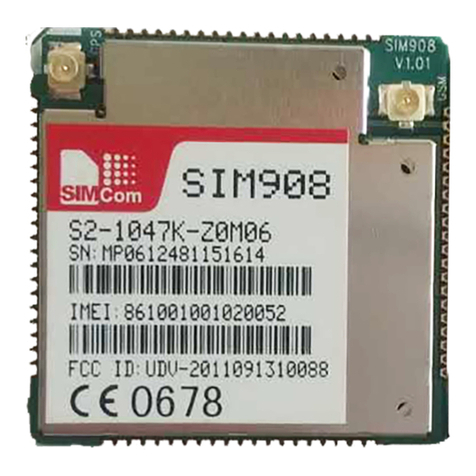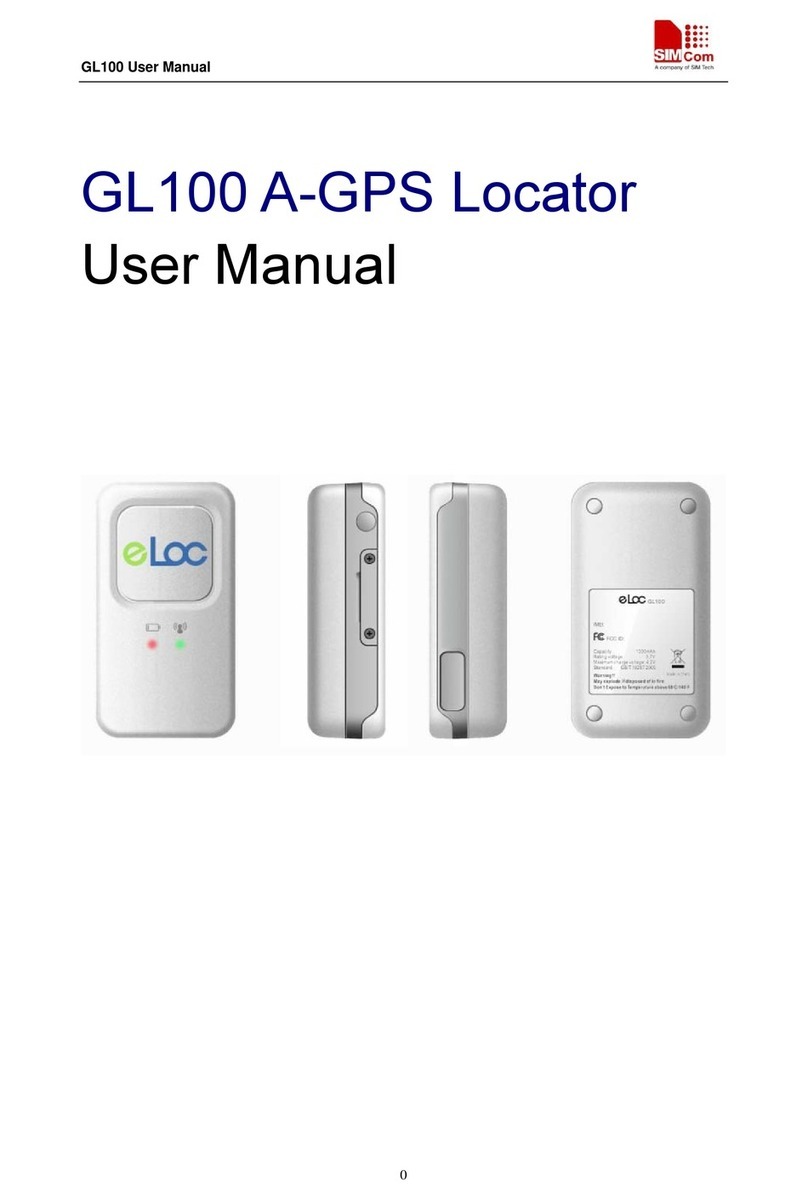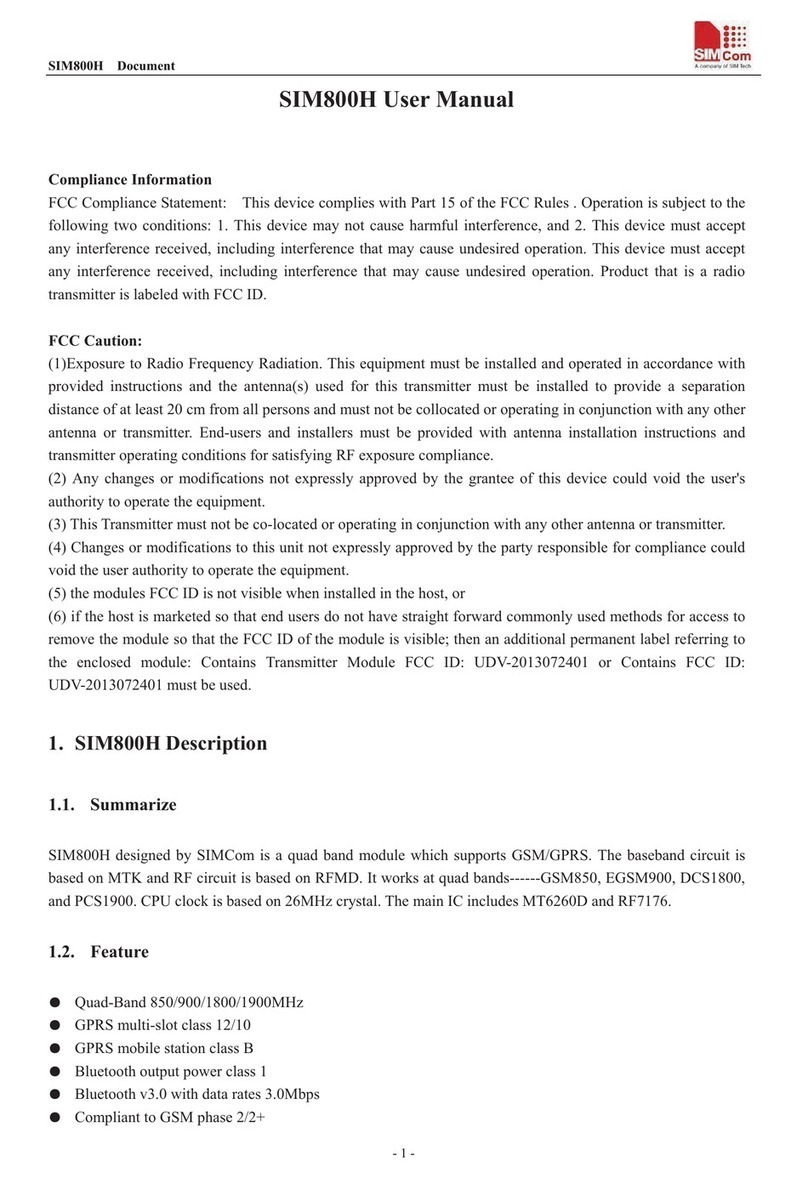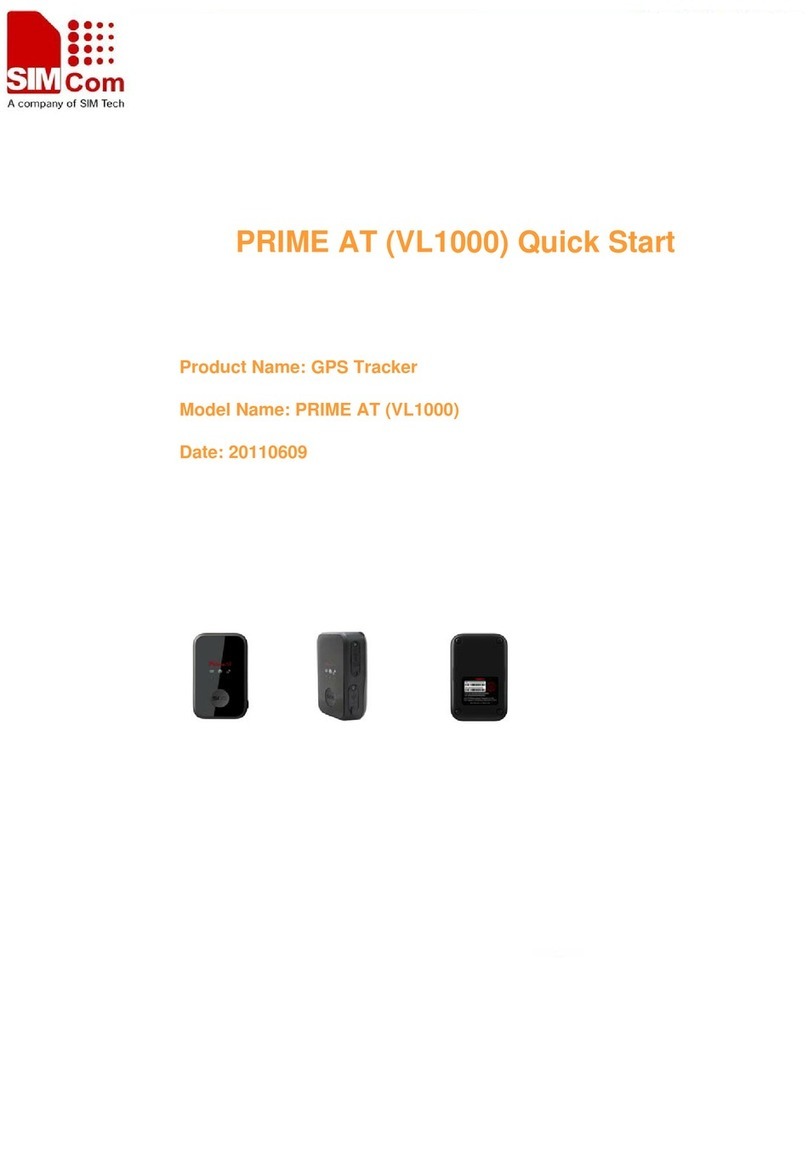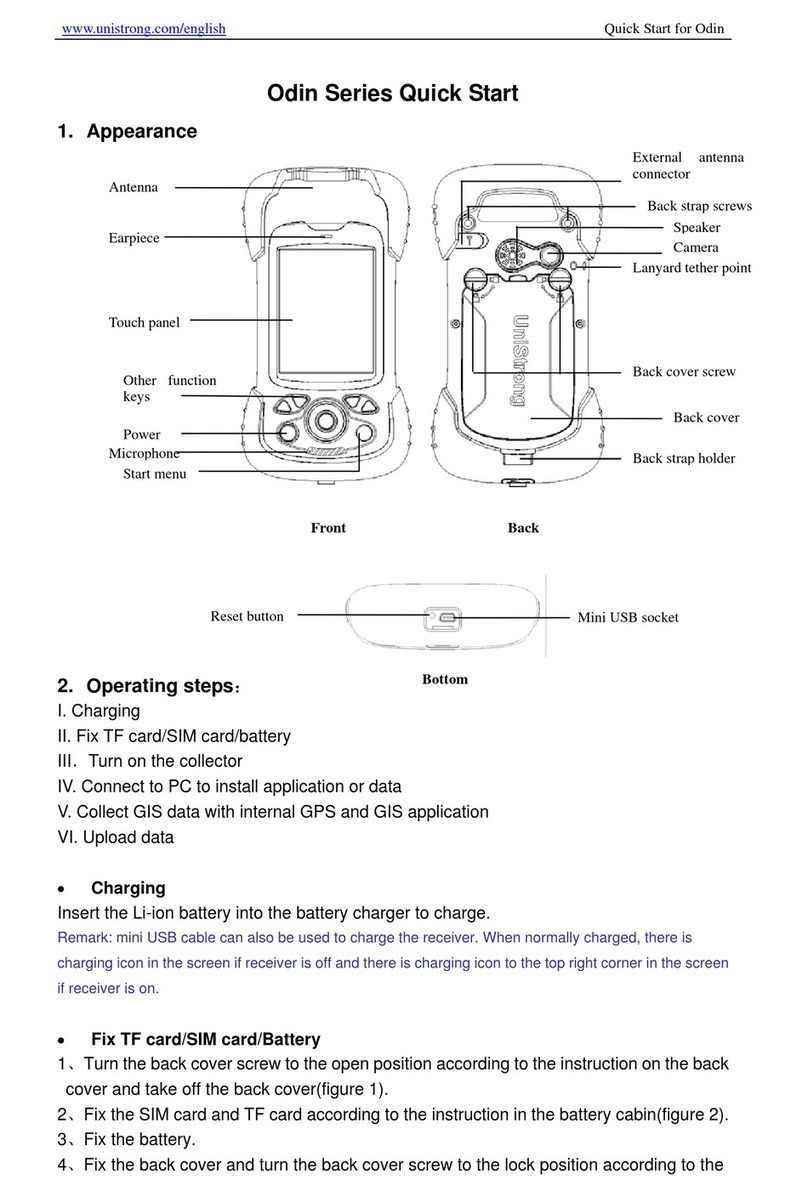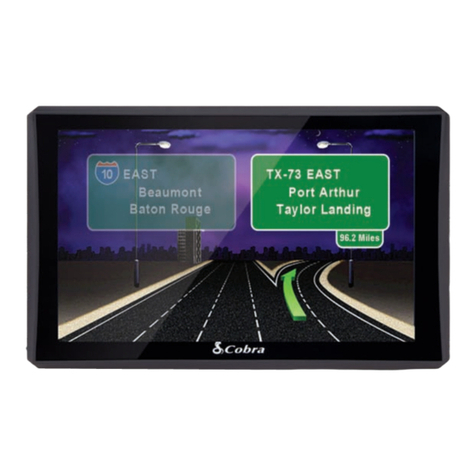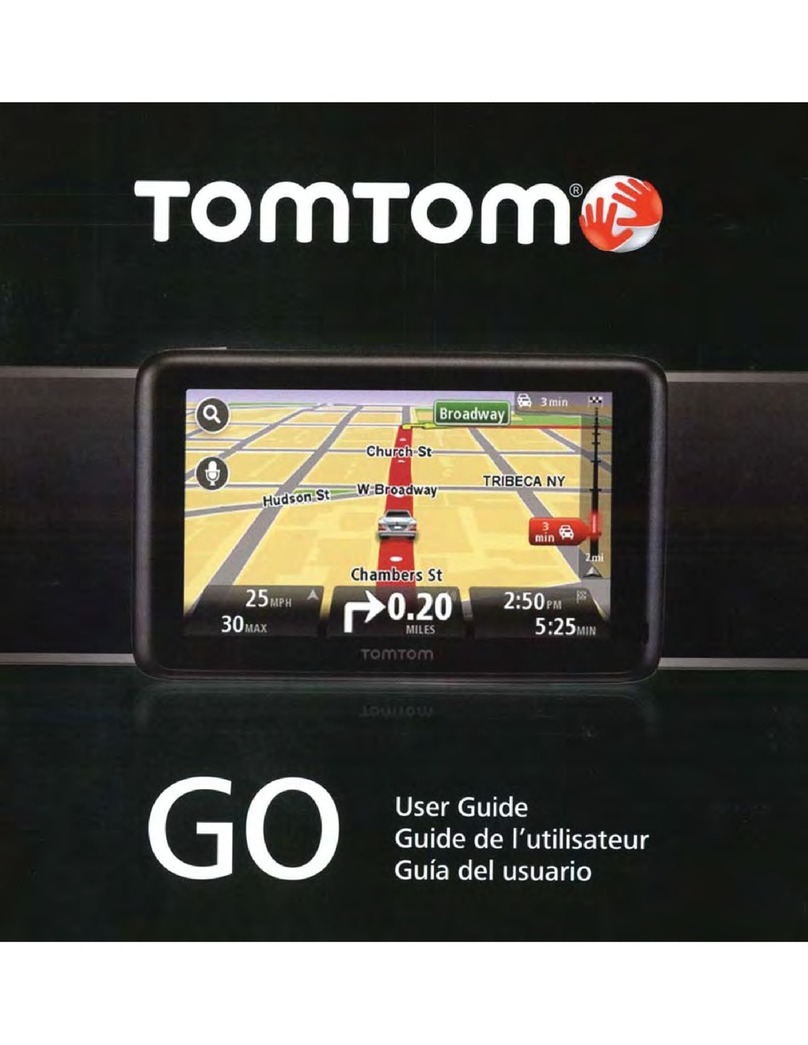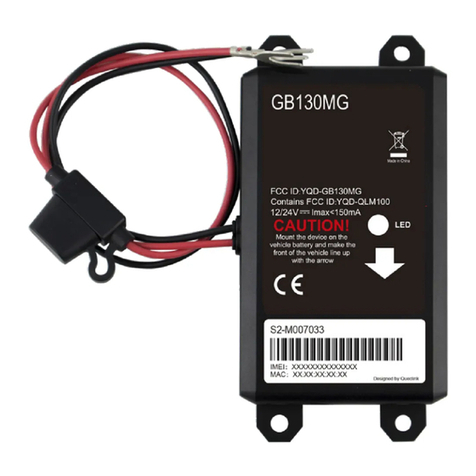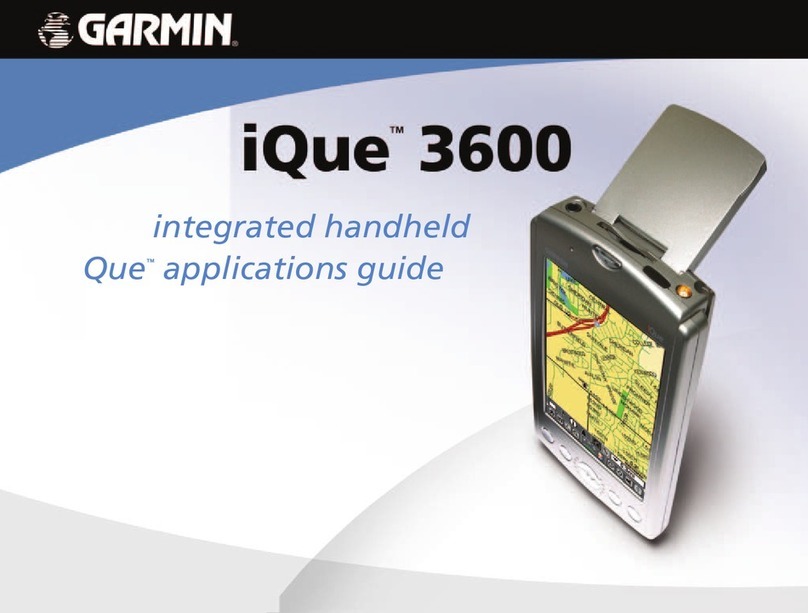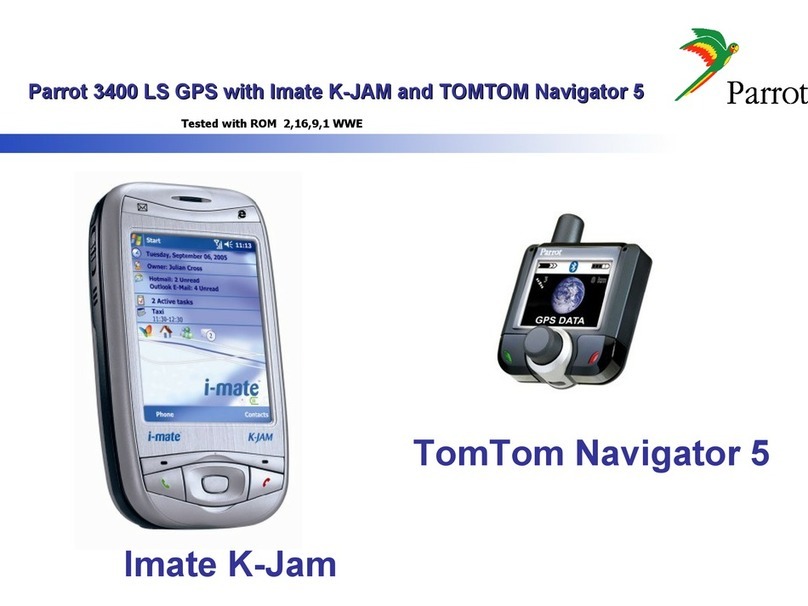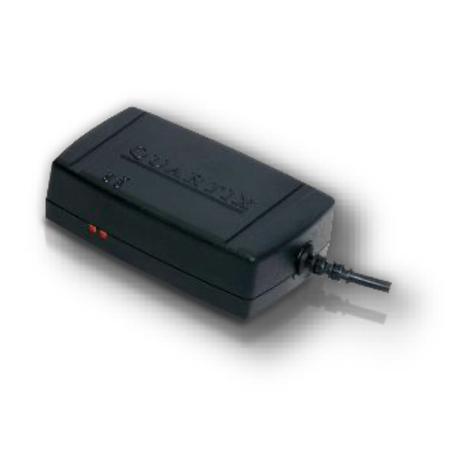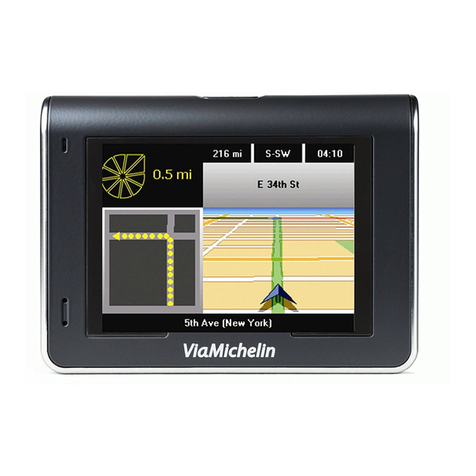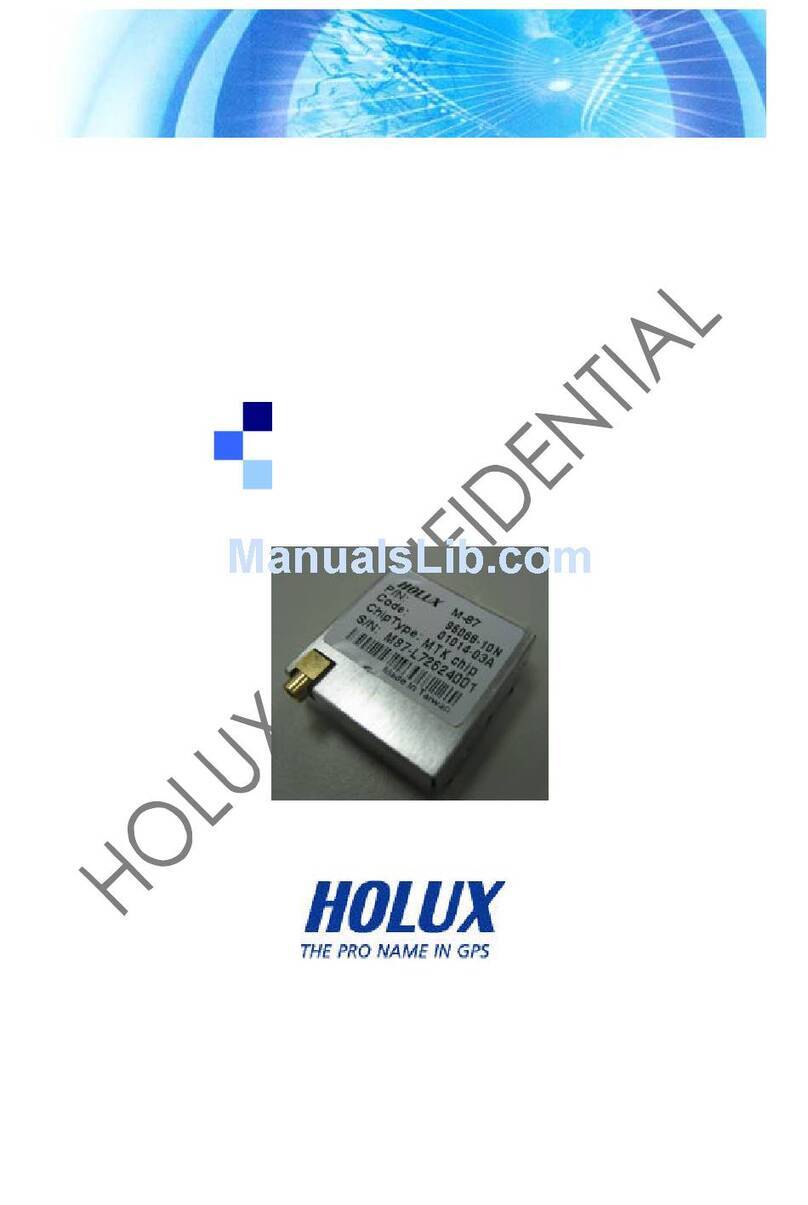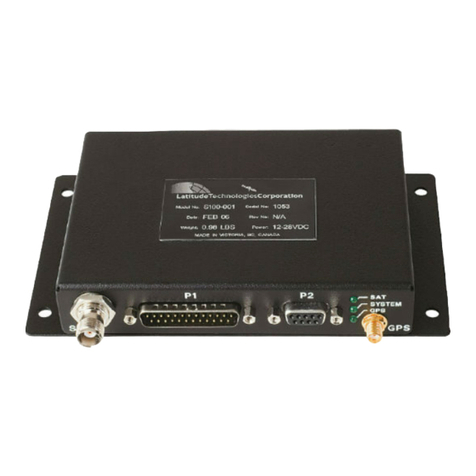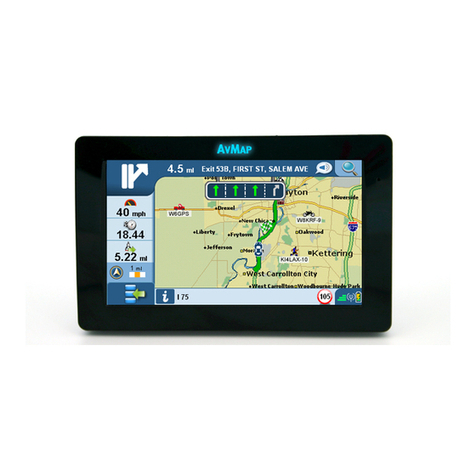SimCom SIM900 Series Supplement

a
Hardware Design
SIM900_HD_V1.05

SIM900 Hardware Design
Document Title: SIM900 Hardware Design
Version: 1.05
Date: 2010-06-23
Status: Release
Document Control ID: SIM900_HD_V1.05
General Notes
SIMCom offers this information as a service to its customers, to support application and engineering efforts
that use the products designed by SIMCom. The information provided is based upon requirements
specifically provided to SIMCom by the customers. SIMCom has not undertaken any independent search for
additional relevant information, including any information that may be in the customer’s possession.
Furthermore, system validation of this product designed by SIMCom within a larger electronic system
remains the responsibility of the customer or the customer’s system integrator. All specifications supplied
herein are subject to change.
Copyright
This document contains proprietary technical information which is the property of SIMCom Limited,
copying of this document and giving it to others and the using or communication of the contents thereof, are
forbidden without express authority. Offenders are liable to the payment of damages. All rights reserved in
the event of grant of a patent or the registration of a utility model or design. All specification supplied herein
are subject to change without notice at any time.
Copyright © Shanghai SIMCom Wireless Solutions Ltd. 2010
SIM900_HD_V1.05 06.23.2010
2

SIM900 Hardware Design
Contents
Contents .....................................................................................................................................................................3
Version history...........................................................................................................................................................7
1 Introduction.............................................................................................................................................................8
1.1 Related Documents .......................................................................................................................................8
1.2 Terms and Abbreviations...............................................................................................................................8
1.3 Safety Caution.............................................................................................................................................11
2 SIM900 Overview.................................................................................................................................................13
2.1 SIM900 Key Features..................................................................................................................................13
2.2 SIM900 Functional Diagram.......................................................................................................................15
2.3 SIM900 Evaluation Board...........................................................................................................................16
3 Application Interface.............................................................................................................................................17
3.1 SIM900 Pin Description..............................................................................................................................17
3.2 Operating Modes.........................................................................................................................................20
3.3 Power Supply ..............................................................................................................................................21
3.3.1 Power Supply Pins.............................................................................................................................23
3.3.2 Minimizing Power Losses .................................................................................................................23
3.3.3 Monitoring Power Supply .................................................................................................................23
3.4 Power Up and Power Down Scenarios........................................................................................................23
3.4.1 Turn on SIM900 ................................................................................................................................23
3.4.2 Turn Off SIM900...............................................................................................................................26
3.4.3 Restart SIM900 Using the PWRKEY Pin .........................................................................................29
3.5 Power Saving ..............................................................................................................................................29
3.5.1 Minimum Functionality Mode ..........................................................................................................29
3.5.2 Sleep Mode (Slow Clock Mode) .......................................................................................................30
3.5.3 Wake Up SIM900 from SLEEP Mode..............................................................................................30
3.6 Summary of State Transitions (except SLEEP mode).................................................................................30
3.7 RTC Backup ................................................................................................................................................31
3.8 Serial Interfaces...........................................................................................................................................32
3.8.1 Function of serial port & debug port supporting ...............................................................................33
3.8.2 Software Upgrade and Software Debug ............................................................................................34
3.9 Audio Interfaces ..........................................................................................................................................35
3.9.1 Speaker Interface Configuration........................................................................................................36
3.9.2 Microphone Interfaces Configuration ...............................................................................................37
3.9.3 Earphone Interface Configuration .....................................................................................................37
3.9.4 Referenced Electronic Characteristic ................................................................................................37
3.10 SIM Card Interface....................................................................................................................................38
3.10.1 SIM Card Application .....................................................................................................................38
3.10.2 Design Considerations for SIM Card Holder ..................................................................................40
3.11 LCD Display Interface ..............................................................................................................................42
SIM900_HD_V1.05 06.23.2010
3

SIM900 Hardware Design
3.12 Keypad Interface .......................................................................................................................................42
3.13 ADC ..........................................................................................................................................................44
3.14 Behaviors of the RI ...................................................................................................................................44
3.15 Network Status Indication.........................................................................................................................45
3.16 General Purpose Input Output (GPIO)......................................................................................................46
3.17 External Reset ...........................................................................................................................................47
3.18 PWM .........................................................................................................................................................47
3.19 I2C Bus......................................................................................................................................................47
4 Antenna Interface ..................................................................................................................................................48
4.1 Module RF Output Power ...........................................................................................................................48
4.2 Module RF Receive Sensitivity...................................................................................................................48
4.3 Module Operating Frequencies ...................................................................................................................49
5 Electrical, Reliability and Radio Characteristics...................................................................................................49
5.1 Absolute Maximum Ratings........................................................................................................................49
5.2 Operating Temperatures..............................................................................................................................49
5.3 Power Supply Ratings .................................................................................................................................50
5.4 Current Consumption(VBAT = 3.8V).........................................................................................................51
5.5 Electro-Static Discharge..............................................................................................................................52
6 Mechanics .............................................................................................................................................................52
6.1 Mechanical Dimensions of SIM900............................................................................................................52
6.2 Top and Bottom View of the SIM900 .........................................................................................................55
6.3 PIN Assignment of SIM900........................................................................................................................56
6.4 The Ramp-Soak-Spike Reflow Profile of SIM900 .....................................................................................58
SIM900_HD_V1.05 06.23.2010
4

SIM900 Hardware Design
Table Index
TABLE 1: RELATED DOCUMENTS............................................................................................................................... 8
TABLE 2: TERMS AND ABBREVIATIONS ................................................................................................................... 8
TABLE 3: SIM900 KEY FEATURES.............................................................................................................................. 13
TABLE 4: CODING SCHEMES AND MAXIMUM NET DATA RATES OVER AIR INTERFACE............................ 15
TABLE 5: PIN DESCRIPTION ....................................................................................................................................... 17
TABLE 6: OVERVIEW OF OPERATING MODES........................................................................................................ 20
TABLE 7: PIN DEFINITION OF THE SERIAL INTERFACES .................................................................................... 32
TABLE 8: LOGIC LEVELS OF THE SERIAL PORT AND DEBUG PORT ................................................................. 33
TABLE 9: PIN DEFINE OF THE AUDIO INTERFACE ................................................................................................ 35
TABLE 10: MIC INPUT CHARACTERISTICS ............................................................................................................. 37
TABLE 11: AUDIO OUTPUT CHARACTERISTICS .................................................................................................... 38
TABLE 12: PIN DEFINE OF THE SIM INTERFACE.................................................................................................... 39
TABLE 13: PIN DESCRIPTION (AMPHENOL SIM CARD HOLDER) ...................................................................... 40
TABLE 14: PIN DESCRIPTION (MOLEX SIM CARD HOLDER) .............................................................................. 41
TABLE 15: PIN DEFINE OF THE LCD INTERFACE................................................................................................... 42
TABLE 16: PIN DEFINE OF THE KEYPAD INTERFACE ........................................................................................... 43
TABLE 17: ADC SPECIFICATION ................................................................................................................................44
TABLE 18: BEHAVIOURS OF THE RI.......................................................................................................................... 44
TABLE 19: WORKING STATE OF THE NETLIGHT ................................................................................................... 45
TABLE 20: PIN DEFINE OF THE GPIO INTERFACE ................................................................................................. 46
TABLE 21: PIN DEFINE OF THE PWM........................................................................................................................ 47
TABLE 22: PIN DEFINE OF THE I2C BUS .................................................................................................................. 48
TABLE 23: SIM900 CONDUCTED RF OUTPUT POWER........................................................................................... 48
TABLE 24: SIM900 CONDUCTED RF RECEIVE SENSITIVITY ............................................................................... 48
TABLE 25: SIM900 OPERATING FREQUENCIES ...................................................................................................... 49
TABLE 26: ABSOLUTE MAXIMUM RATINGS........................................................................................................... 49
TABLE 27: SIM900 OPERATING TEMPERATURE..................................................................................................... 49
TABLE 28: SIM900 POWER SUPPLY RATINGS ......................................................................................................... 50
TABLE 29: SIM900 CURRENT CONSUMPTION ........................................................................................................ 51
TABLE 30: THE ESD ENDURE STATUE MEASURED TABLE (TEMPERATURE: 25℃, HUMIDITY:45% ) ........ 52
TABLE 31: PIN ASSIGNMENT...................................................................................................................................... 56
SIM900_HD_V1.05 06.23.2010
5

SIM900 Hardware Design
Figure Index
FIGURE 1: SIM900 FUNCTIONAL DIAGRAM ........................................................................................................... 15
FIGURE 2: TOP VIEW OF SIM900 EVB ....................................................................................................................... 16
FIGURE 3: REFERENCE CIRCUIT OF THE VBAT INPUT ........................................................................................ 22
FIGURE 4: REFERENCE CIRCUIT OF THE SOURCE POWER SUPPLY INPUT..................................................... 22
FIGURE 5: VBAT VOLTAGE DROP DURING TRANSMIT BURST........................................................................... 23
FIGURE 6: TURN ON SIM900 USING DRIVING CIRCUIT ....................................................................................... 24
FIGURE 7: TURN ON SIM900 USING BUTTON......................................................................................................... 24
FIGURE 8: TIMING OF TURN ON SYSTEM USING PWRKEY ................................................................................ 25
FIGURE 9: TURN ON SIM900 USING DRIVING CIRCUIT ....................................................................................... 25
FIGURE 10: TURN ON SIM900 USING BUTTON....................................................................................................... 26
FIGURE 11: TIMING OF TURN ON SYSTEM USING PWRKEY AND PWRKEY_OUT ......................................... 26
FIGURE 12: TIMING OF TURN OFF SYSTEM USING PWRKEY............................................................................. 27
FIGURE 13: TIMING OF TURN OFF SYSTEM USING PWRKEY AND PWRKEY_OUT........................................ 27
FIGURE 14: TIMING OF RESTART SYSTEM ............................................................................................................. 29
FIGURE 15: STATE TRANSITION ................................................................................................................................30
FIGURE 16: RTC SUPPLY FROM NON-CHARGEABLE BATTERY ......................................................................... 31
FIGURE 17: RTC SUPPLY FROM RECHARGEABLE BATTERY .............................................................................. 31
FIGURE 18: RTC SUPPLY FROM CAPACITOR .......................................................................................................... 31
FIGURE 19: SEIKO XH414H-IV01E CHARGE CHARACTERISTIC ......................................................................... 32
FIGURE 20: CONNECTION OF THE SERIAL INTERFACES..................................................................................... 33
FIGURE 21: CONNECTION OF SOFTWARE UPGRADE AND SOFTWARE DEBUG ............................................. 35
FIGURE 22: RS232 LEVEL CONVERTER CIRCUIT................................................................................................... 35
FIGURE 23: SPEAKER INTERFACE CONFIGURATION ........................................................................................... 36
FIGURE 24: SPEAKER INTERFACE WITH AMPLIFIER CONFIGURATION .......................................................... 36
FIGURE 25: MICROPHONE INTERFACE CONFIGURATION................................................................................... 37
FIGURE 26: EARPHONE INTERFACE CONFIGURATION........................................................................................ 37
FIGURE 27: REFERENCE CIRCUIT OF THE 8 PINS SIM CARD.............................................................................. 39
FIGURE 28: REFERENCE CIRCUIT OF THE 6 PINS SIM CARD.............................................................................. 40
FIGURE 29: AMPHENOL C707 10M006 512 2 SIM CARD HOLDER........................................................................ 40
FIGURE 30: MOLEX 91228 SIM CARD HOLDER ...................................................................................................... 41
FIGURE 31: REFERENCE CIRCUIT OF THE KEYPAD INTERFACE ....................................................................... 43
FIGURE 32: ARCHITECTURE OF ADC ....................................................................................................................... 44
FIGURE 33: SIM900 SERVICES AS RECEIVER.......................................................................................................... 45
FIGURE 34: SIM900 SERVICES AS CALLER.............................................................................................................. 45
FIGURE 35: REFERENCE CIRCUIT OF NETLIGHT .................................................................................................. 46
FIGURE 36: RESET TIMING ......................................................................................................................................... 47
FIGURE 37: TOP AN SIDE MECHANICAL DIMENSIONS OF MODULE (UNIT: MM).................................... 53
FIGURE 38:BOTTOM MECHANICAL DIMENSIONS OF MODULE (UNIT: MM)......................................... 54
FIGURE 39: RECOMMENDED PCB DECAL(UNIT: MM).................................................................................... 54
FIGURE 40: TOP VIEW OF THE SIM900 ..................................................................................................................... 55
FIGURE 41: SIM900 PIN OUT DIAGRAM (TOP VIEW)............................................................................................. 56
FIGURE 42: THE RAMP-SOAK-SPIKE REFLOW PROFILE OF SIM900.................................................................. 58
SIM900_HD_V1.05 06.23.2010
6

SIM900 Hardware Design
Version history
Date Version Description of change Author
2009-12-26 1.01 Origin LiGang
2010-02-04 1.02 Modify the voltage range of ADC input.
Modify the figure of bottom mechanical dimensions of
module.
Modify the figure of recommended PCB decal and the
note.
LiGang
§2, § 2.1 Changed the lowest current consumption in
sleep mode from 1.5mA to 1.0mA.
§3.1 Add the description of the RXD pin, this pin should
be pulled up to VDD_EXT.
§3.4.2.1 Change the pull down time of the figure 12.
Change the impulse time of the figure 13.
§3.8.1 Update the description of autobauding. The
default setting is autobauding mode.
§3.9.4 Add audio parameters in table 10 and table 11.
§3.10.1 Change the value of the capacitance from 220nF
to 100nF in figure 27 and figure 28.
2010-04-07 1.03
§3.13 Delete the pull up resistor of figure 32.
LiGang
2010-05-07 1.04 §2.1, § 3.4.2.3 Modify the power supply range from
3.4V~4.5V to 3.2V~4.8V. LiGang
2010-06-23 1.05 §3.7, Modify the VRTC pin connection when backup is
not needed.
§3.4, Revise Figure 8 & Figure 11
§5.3 Revise the Supply Voltage Range
ZhouQiang
SIM900_HD_V1.05 7 05.07.2010

SIM900 Hardware Design
1 Introduction
This document describes the hardware interface of the SIMCom SIM900 module that connects to the specific
application and the air interface. As SIM900 can be integrated with a wide range of applications, all functional
components of SIM900 are described in great detail.
This document can help you quickly understand SIM900 interface specifications, electrical and mechanical details.
With the help of this document and other SIM900 application notes, user guide, you can use SIM900 module to
design and set-up mobile applications quickly.
1.1 Related Documents
Table 1: Related documents
SN Document name Remark
[1] SIM900_ATC SIM900_ATC
[2] ITU-T Draft new
recommendation
V.25ter:
Serial asynchronous automatic dialing and control
[3] GSM 07.07: Digital cellular telecommunications (Phase 2+); AT command set for GSM
Mobile Equipment (ME)
[4] GSM 07.10: Support GSM 07.10 multiplexing protocol
[5] GSM 07.05: Digital cellular telecommunications (Phase 2+); Use of Data Terminal
Equipment – Data Circuit terminating Equipment (DTE – DCE) interface for
Short Message Service (SMS) and Cell Broadcast Service (CBS)
[6] GSM 11.14: Digital cellular telecommunications system (Phase 2+); Specification of the SIM
Application Toolkit for the Subscriber Identity Module – Mobile Equipment
(SIM – ME) interface
[7] GSM 11.11: Digital cellular telecommunications system (Phase 2+); Specification of the
Subscriber Identity Module – Mobile Equipment (SIM – ME) interface
[8] GSM 03.38: Digital cellular telecommunications system (Phase 2+); Alphabets and
language-specific information
[9] GSM 11.10 Digital cellular telecommunications system (Phase 2);Mobile Station (MS)
conformance specification;Part 1: Conformance specification
[10] AN_Serial Port AN_Serial Port
1.2 Terms andAbbreviations
Table 2: Terms and Abbreviations
SIM900_HD_V1.05 06.23.2010
8

SIM900 Hardware Design
Abbreviation Description
ADC Analog-to-Digital Converter
AMR Adaptive Multi-Rate
ARP Antenna Reference Point
ASIC Application Specific Integrated Circuit
BER Bit Error Rate
BTS Base Transceiver Station
CHAP Challenge Handshake Authentication Protocol
CS Coding Scheme
CSD Circuit Switched Data
CTS Clear to Send
DAC Digital-to-Analog Converter
DRX Discontinuous Reception
DSP Digital Signal Processor
DTE Data Terminal Equipment (typically computer, terminal, printer)
DTR Data Terminal Ready
DTX Discontinuous Transmission
EFR Enhanced Full Rate
EGSM Enhanced GSM
EMC Electromagnetic Compatibility
ESD Electrostatic Discharge
ETS European Telecommunication Standard
FCC Federal Communications Commission (U.S.)
FDMA Frequency Division Multiple Access
FR Full Rate
GMSK Gaussian Minimum Shift Keying
GPRS General Packet Radio Service
GSM Global Standard for Mobile Communications
HR Half Rate
I/O Input/Output
IC Integrated Circuit
IMEI International Mobile Equipment Identity
kbps Kilo bits per second
LED Light Emitting Diode
Li-Ion Lithium-Ion
MO Mobile Originated
MS Mobile Station (GSM engine), also referred to as TE
MT Mobile Terminated
SIM900_HD_V1.05 06.23.2010
9

SIM900 Hardware Design
Abbreviation Description
PAP Password Authentication Protocol
PBCCH Packet Switched Broadcast Control Channel
PCB Printed Circuit Board
PCS Personal Communication System, also referred to as GSM 1900
PDU Protocol Data Unit
PPP Point-to-point protocol
RF Radio Frequency
RMS Root Mean Square (value)
RTC Real Time Clock
RX Receive Direction
SIM Subscriber Identification Module
SMS Short Message Service
TDMA Time Division Multiple Access
TE Terminal Equipment, also referred to as DTE
TX Transmit Direction
UART Universal Asynchronous Receiver & Transmitter
URC Unsolicited Result Code
USSD Unstructured Supplementary Service Data
VSWR Voltage Standing Wave Ratio
Vmax Maximum Voltage Value
Vnorm Normal Voltage Value
Vmin Minimum Voltage Value
VIHmax Maximum Input High Level Voltage Value
VIHmin Minimum Input High Level Voltage Value
VILmax Maximum Input Low Level Voltage Value
VILmin Minimum Input Low Level Voltage Value
VImax Absolute Maximum Input Voltage Value
VImin Absolute Minimum Input Voltage Value
VOHmax Maximum Output High Level Voltage Value
VOHmin Minimum Output High Level Voltage Value
VOLmax Maximum Output Low Level Voltage Value
VOLmin Minimum Output Low Level Voltage Value
Inorm Normal Current
Imax Maximum Load Current
Phonebook abbreviations
FD SIM fix dialing phonebook
LD SIM last dialing phonebook (list of numbers most recently dialed)
SIM900_HD_V1.05 06.23.2010
10

SIM900 Hardware Design
Abbreviation Description
MC Mobile Equipment list of unanswered MT calls (missed calls)
ON SIM (or ME) own numbers (MSISDNs) list
RC Mobile Equipment list of received calls
SM SIM phonebook
NC Not connect
1.3 Safety Caution
The following safety precautions must be observed during all phases of the operation. Usage, service or repair of
any cellular terminal or mobile incorporating SIM900 module. Manufactures of the cellular terminal should send
words the following safety information to users and operating personnel and to incorporate these guidelines into
all manuals supplied with the product. If not so, SIMCom does not take on any liability for customer failure to
comply with these precautions.
When in a hospital or other health care facility, observe the restrictions about the
use of mobiles. Switch the cellular terminal or mobile off, medical equipment may be sensitive
to not operate normally for RF energy interference.
Switch off the cellular terminal or mobile before boarding an aircraft. Make sure it be switched
off. The operation of wireless appliances in an aircraft is forbidden to prevent interference with
communication systems. Forget to think much of these instructions may lead to the flight safety
or offend against local legal action, or both.
Do not operate the cellular terminal or mobile in the presence of flammable gases or fumes.
Switch off the cellular terminal when you are near petrol stations, fuel depots, chemical plants or
where blasting operations are in progress. Operation of any electrical equipment in potentially
explosive atmospheres can constitute a safety hazard.
Your cellular terminal or mobile receives and transmits radio frequency energy while switched
on. RF interference can occur if it is used close to TV sets, radios, computers or other electric
equipment.
Road safety comes first! Do not use a hand-held cellular terminal or mobile when driving a
vehicle, unless it is securely mounted in a holder for hands free operation. Before making a call
with a hand-held terminal or mobile, park the vehicle.
SIM900_HD_V1.05 06.23.2010
11

SIM900 Hardware Design
GSM cellular terminals or mobiles operate over radio frequency signals and cellular networks
and cannot be guaranteed to connect in all conditions, for example no mobile fee or a invalid
SIM card. While you are in this condition and need emergent help, Please Remember using
emergency calls. In order to make or receive calls, the cellular terminal or mobile must be
switched on and in a service area with adequate cellular signal strength.
Some networks do not allow for emergency call if certain network services or phone features
are in use (e.g. lock functions, fixed dialing etc.). You may
have to deactivate those features before you can make an emergency call.
Also, some networks require that a valid SIM card be properly inserted in the cellular terminal
or mobile.
SIM900_HD_V1.05 06.23.2010
12

SIM900 Hardware Design
2 SIM900 Overview
Designed for global market, SIM900 is a quad-band GSM/GPRS engine that works on frequencies GSM 850MHz,
EGSM 900MHz, DCS 1800MHz and PCS 1900MHz. SIM900 features GPRS multi-slot class 10/ class 8
(optional) and supports the GPRS coding schemes CS-1, CS-2, CS-3 and CS-4.
With a tiny configuration of 24mm x 24mm x 3mm, SIM900 can meet almost all the space requirements in your
applications, such as M2M, smart phone, PDA and other mobile devices.
The physical interface to the mobile application is a 68-pin SMT pad, which provides all hardware interfaces
between the module and customers’ boards.
zThe keypad and SPI display interface will give you the flexibility to develop customized applications.
zSerial port and Debug port can help you easily develop your applications.
zOne audio channel includes a microphone input and a speaker output.
zProgrammable General Purpose Input & Output.
The SIM900 is designed with power saving technique so that the current consumption is as low as 1.0mA in
SLEEP mode.
The SIM900 is integrated with the TCP/IP protocol; extended TCP/IP AT commands are developed for customers
to use the TCP/IP protocol easily, which is very useful for those data transfer applications.
2.1 SIM900 Key Features
Table 3: SIM900 key features
Feature Implementation
Power supply Single supply voltage:3.1V – 4.8V
Power saving Typical power consumption in SLEEP mode is 1.0mA ( BS-PA-MFRMS=9 )
Frequency Bands
zSIM900 Quad-band: GSM 850, EGSM 900, DCS 1800, PCS 1900. The
SIM900 can search the 4 frequency bands automatically. The frequency
bands also can be set by AT command.
zCompliant to GSM Phase 2/2+
GSM class Small MS
Transmitting power zClass 4 (2W) at GSM 850 and EGSM 900
zClass 1 (1W) at DCS 1800 and PCS 1900
GPRS connectivity
zGPRS multi-slot class 10 (default)
zGPRS multi-slot class 8 (option)
zGPRS mobile station class B
SIM900_HD_V1.05 06.23.2010
13

SIM900 Hardware Design
Temperature range
zNormal operation: -30°C to +80°C
zRestricted operation: -40°C to -30°C and +80 °C to +85°C(1)
zStorage temperature -45°C to +90°C
DATA GPRS:
CSD:
zGPRS data downlink transfer: max. 85.6 kbps
zGPRS data uplink transfer: max. 42.8 kbps
zCoding scheme: CS-1, CS-2, CS-3 and CS-4
zSupports the protocols PAP (Password Authentication Protocol) usually used
for PPP connections.
zIntegrates the TCP/IP protocol.
zSupport Packet Switched Broadcast Control Channel (PBCCH)
zCSD transmission rates: 2.4, 4.8, 9.6, 14.4 kbps, non-transparent
zUnstructured Supplementary Services Data (USSD) support
SMS zMT, MO, CB, Text and PDU mode
zSMS storage: SIM card
FAX Group 3 Class 1
SIM interface Support SIM card: 1.8V, 3V
External antenna Antenna pad
Audio features Speech codec modes:
zHalf Rate (ETS 06.20)
zFull Rate (ETS 06.10)
zEnhanced Full Rate (ETS 06.50 / 06.60 / 06.80)
zAdaptive multi rate (AMR)
zEcho Cancellation
zNoise Suppression
Serial port and
Debug port
Serial Port:
z8-wire modem interface with status and control lines, unbalanced,
asynchronous.
z1.2kbps to 115.2kbps.
zSerial Port can be used for AT commands or data stream.
zSupports RTS/CTS hardware handshake and software ON/OFF flow control.
zMultiplex ability according to GSM 07.10 Multiplexer Protocol.
zAutobauding supports baud rate from 1200 bps to 57600bps.
Debug port:
z2-wire null modem interface DBG_TXD and DBG_RXD.
zCan be used for debugging and upgrading firmware.
Phonebook management Support phonebook types: SM, FD, LD, RC, ON, MC.
SIM Application Toolkit Support SAT class 3, GSM 11.14 Release 99
Real time clock Implemented
Timer function Programmable via AT command
Physical characteristics Size: 24mm x 24mm x 3mm
Weight: 3.4g
Firmware upgrade Firmware upgrade by debug port.
SIM900_HD_V1.05 06.23.2010
14

SIM900 Hardware Design
(1) The SIM900 does work, but deviations from the GSM specification may occur.
Table 4: Coding schemes and maximum net data rates over air interface
Coding scheme 1 Timeslot 2 Timeslot 4 Timeslot
CS-1: 9.05kbps 18.1kbps 36.2kbps
CS-2: 13.4kbps 26.8kbps 53.6kbps
CS-3: 15.6kbps 31.2kbps 62.4kbps
CS-4: 21.4kbps 42.8kbps 85.6kbps
2.2 SIM900 Functional Diagram
The following figure shows a functional diagram of the SIM900 and illustrates the mainly functional part:
zThe GSM baseband engine
zFlash and SRAM
zThe GSM radio frequency part
zThe antenna interface
zThe Other interfaces
Figure 1: SIM900 functional diagram
SIM900_HD_V1.05 06.23.2010
15

SIM900 Hardware Design
2.3 SIM900 Evaluation Board
In order to help you on the application of SIM900, SIMCom can supply an Evaluation Board (EVB) that
interfaces the SIM900 directly with appropriate power supply, SIM card holder, RS232 serial port, handset port,
earphone port, line in port, antenna and all GPIO of the SIM900.
Figure 2: Top view of SIM900 EVB
For details please refer to the SIM900-EVB_UGD document.
SIM900_HD_V1.05 06.23.2010
16

SIM900 Hardware Design
3 Application Interface
SIM900 is equipped with a 68-pin SMT pad that connects to the cellular application platform. Sub-interfaces
included in these SMT pads are described in detail in following chapters:
zPower supply (please refer to Chapter 3.3)
zSerial interfaces (please refer to Chapter 3.8)
zAnalog audio interfaces (please refer to Chapter 3.9)
zSIM interface (please refer to Chapter 3.10)
Electrical and mechanical characteristics of the SMT pad are specified in Chapter 5.
3.1 SIM900 Pin Description
Table 5: Pin description
Power Supply
PIN NAME I/O DESCRIPTION DC CHARACTERISTICS COMMENT
VBAT I 3 VBAT pins are dedicated to
connect the supply voltage.
The power supply of
SIM900 has to be a single
voltage source of VBAT=
3.1V...4.8V. It must be able
to provide sufficient current
in a transmit burst which
typically rises to 2A
Vmax= 4.8V
Vmin=3.1V
Vnorm=4.0V
VRTC I/O Current input for RTC when
the battery is not supplied for
the system.
Current output for backup
battery when the main
battery is present and the
backup battery is in low
voltage state.
Vmax=3.15V
Vmin=2.0V
Vnorm=3.0V
Iout(max)= 300uA
Iin=2 uA
If RTC backup
is needed, a
battery or
capacitor
should be
connected with
the VRTC pin..
If RTC backup
is not needed, a
capacitor
should be
connected to
this pin.
SIM900_HD_V1.05 06.23.2010
17

SIM900 Hardware Design
VDD_EXT O 2.8V output power supply Vmax=2.95V
Vmin=2.70V
Vnorm=2.80V
Iout(max)= 10mA
If unused, keep
open.
GND Ground
Power on or power off
PIN NAME I/O DESCRIPTION DC CHARACTERISTICS
PWRKEY I Voltage input for PWRKEY.
PWRKEY should be pulled
low to power on or power off
the system. The user should
drive the PWRKEY to low
level voltage for a short time
when power on or power off
the system because the
system need margin time in
order to assert the software.
VILmax=0.15*VDD_EXT
VIHmin=0.85* VDD_EXT
VImax=VDD_EXT
VILmin= 0V
It is already
pulled up.
PWRKEY_O
UT
O Connecting PWRKEY and
PWRKEY_OUT for a short
time then release also can
power on or power off the
module.
VOHmin= VDD_EXT-0.1V
VOLmax=0.1V
VOHmax= VDD_EXT
VOLmin= 0V
Audio interfaces
PIN NAME I/O DESCRIPTION DC CHARACTERISTICS COMMENT
MIC_P
MIC_N
I Positive and negative voice
band input
Audio DC Characteristics refer to
chapter 3.9
If unused keep
open
SPK_P
SPK_N
O Positive and negative voice
band output
If unused keep
open
LINEIN_R
LINEIN_L
I Line input If unused keep
open
GERNERAL PURPOSE input/output
PIN NAME I/O DESCRIPTION DC CHARACTERISTICS COMMENT
STATUS O Indicate working status If unused keep
open
NETLIGHT O Indicate net status If unused keep
open
DISP_DATA I/O
DISP _CLK O
DISP _CS O
DISP _D/C O
Display interface
VILmax=0.15 *VDD_EXT
VIHmin=0.85*VDD_EXT
VILmin= 0V
VIHmax= VDD_EXT
VOHmin= VDD_EXT-0.1V
VOLmax=0.1V
VOHmax= VDD_EXT
VOLmin= 0V
If unused keep
open
SIM900_HD_V1.05 06.23.2010
18

SIM900 Hardware Design
SCL O I2C bus clock
SDA I/O I2C bus data
If unused keep
open
KBR0~KBR4 O If unused keep
these pins open
KBC0~KBC4 I Keypad interface
Pull up to
VDD_EXT, if
unused keep
pins open
Serial port
PIN NAME I/O DESCRIPTION DC CHARACTERISTICS COMMENT
RXD I Receive data
TXD O Transmit data
RTS I Request to send
CTS O Clear to send
RI O Ring indicator
DSR O Data Set Ready
DCD O Data carry detect
DTR I Data terminal Ready
VILmax=0.15 *VDD_EXT
VIHmin=0.85*VDD_EXT
VILmin= 0V
VIHmax= VDD_EXT
VOHmin= VDD_EXT-0.1V
VOLmax=0.1V
VOHmax= VDD_EXT
VOLmin= 0V
RXD pin
should be
pulled up to
VDD_EXT.
DTR Pin has
been pulled
up to
VDD_EXT
internally.
Other unused
pins can keep
open
Debug interface
PIN NAME I/O DESCRIPTION DC CHARACTERISTICS COMMENT
DBG_TXD O
DBG_RXD I
Serial interface for
debugging and firmware
upgrade
VILmax=0.15 *VDD_EXT
VIHmin=0.85*VDD_EXT
VILmin= 0V
VIHmax= VDD_EXT
VOHmin= VDD_EXT-0.1V
VOLmax=0.1V
VOHmax= VDD_EXT
VOLmin= 0V
If unused keep
pins open
SIM interface
PIN NAME I/O DESCRIPTION DC CHARACTERISTICS COMMENT
SIM_VDD O Voltage supply for SIM card The voltage can be select by software
automatically either 1.8V or 3V
SIM_DATA I/O SIM data output
SIM_CLK O SIM clock
SIM_RST O SIM reset
VILmax=0.15 *SIM_VDD
VIHmin=0.85*SIM_VDD
VILmin= 0V
VIHmax= SIM_VDD
All signals of
SIM interface
are protected
against ESD
SIM900_HD_V1.05 06.23.2010
19

SIM900 Hardware Design
VOHmin= SIM_VDD-0.1V
VOLmax=0.1V
VOHmax= SIM_VDD
VOLmin= 0V
with a TVS
diode array.
Maximum cable
length 200mm
from the module
pad to SIM card
holder.
SIM_PRESE
NCE
I SIM detect VILmax=0.15 *VDD_EXT
VIHmin=0.85*VDD_EXT
VILmin= 0V
VIHmax= VDD_EXT
If unused keep
open
ADC
PIN NAME I/O DESCRIPTION DC CHARACTERISTICS COMMENT
ADC I General purpose analog to
digital converter.
Input voltage range: 0V ~ 2.8V If unused keep
open
External Reset
PIN NAME I/O DESCRIPTION DC CHARACTERISTICS COMMENT
NRESET I External reset input(Active
low)
VILmax=0.15 *VDD_EXT
VIHmin=0.85*VDD_EXT
VILmin= 0V
VIHmax= VDD_EXT
If unused keep
open
Pulse Width Modulation
PIN NAME I/O DESCRIPTION DC CHARACTERISTICS COMMENT
PWM1 O PWM Output
PWM2 O PWM Output
VOHmin= VDD_EXT-0.1V
VOLmax=0.1V
VOHmax= VDD_EXT
VOLmin=0
If unused keep
open
3.2 Operating Modes
The table below briefly summarizes the various operating modes referred to in the following chapters.
Table 6: Overview of operating modes
Mode Function
Normal
operation
GSM/GPRS
SLEEP
Module will automatically go into SLEEP mode if DTR is set to high level
and there is no on air and no hardware interrupt (such as GPIO interrupt or
data on serial port).
SIM900_HD_V1.05 06.23.2010
20
Other manuals for SIM900 Series
4
Table of contents
Other SimCom GPS manuals
